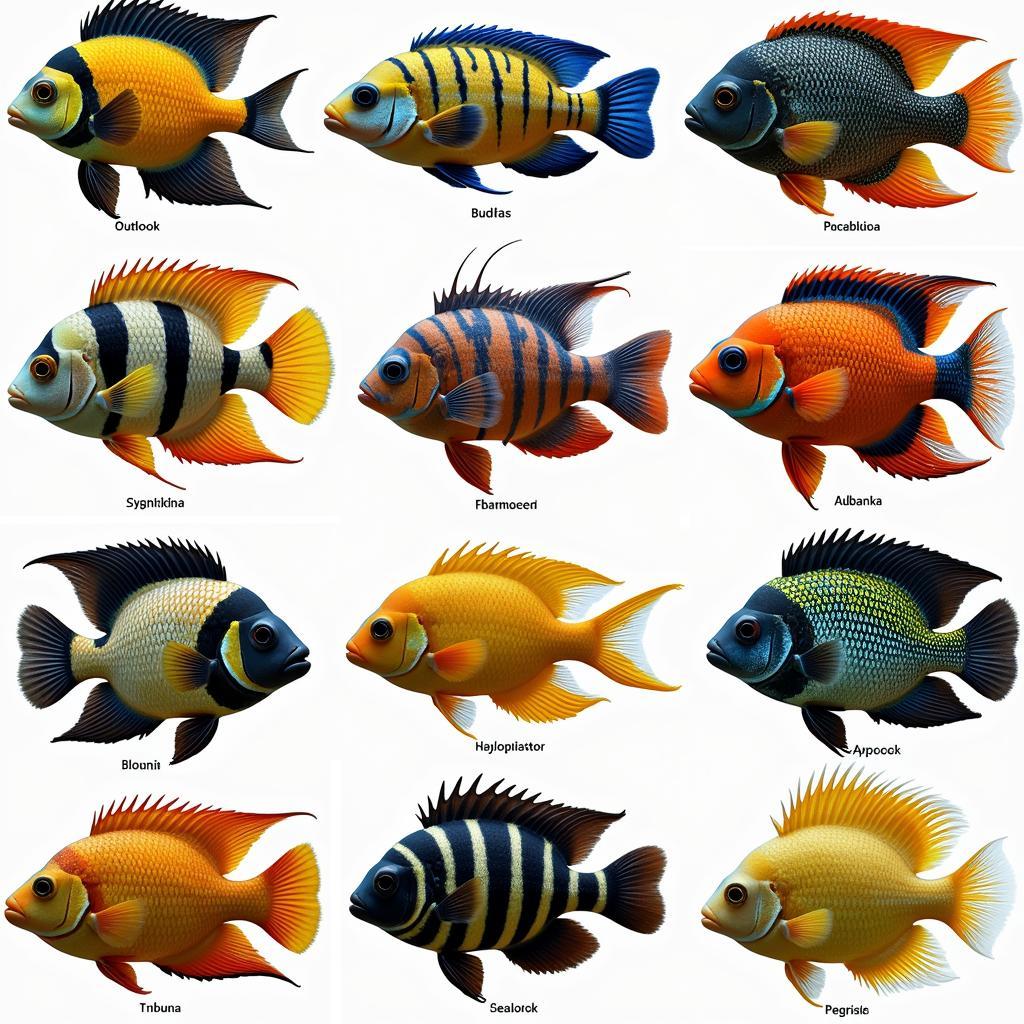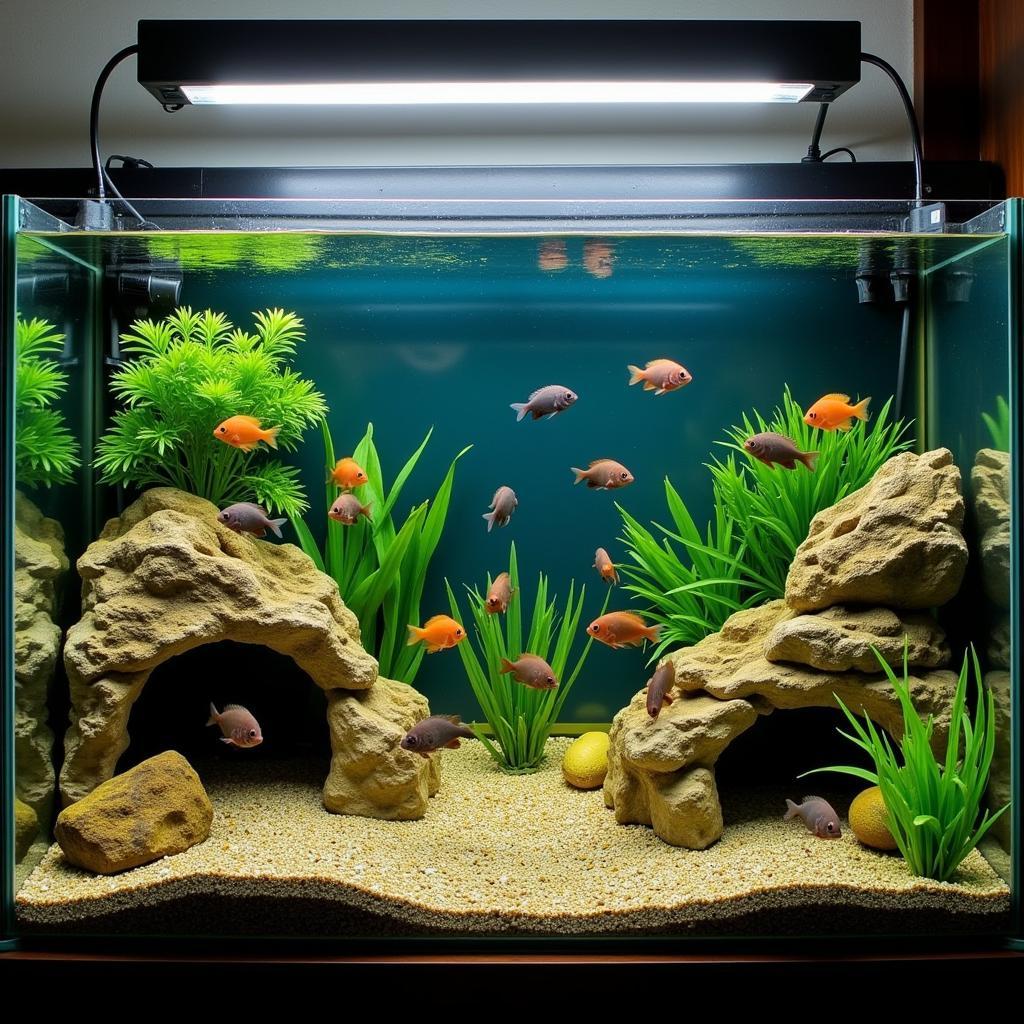Discovering the African Fighting Fish: A Comprehensive Guide
The captivating world of African Fighting Fish offers a unique glimpse into the diverse aquatic life of the continent. These aggressive and visually stunning creatures, often mistaken for the Betta fish, are a fascinating subject for aquarists and nature enthusiasts alike. This guide will delve into the intricacies of these remarkable fish, exploring their natural habitats, diverse species, and the responsible care they require.
Understanding the “African Fighting Fish” Misnomer
The term “African fighting fish” is often used colloquially, leading to some confusion. While Africa boasts various fish species exhibiting territorial behavior, it’s crucial to differentiate them from the Siamese fighting fish (Betta splendens), the true “fighting fish” commonly found in pet stores. The Betta splendens originates from Asia, not Africa. Many African cichlids are often mislabeled as “African fighting fish” due to their sometimes aggressive nature. african cichlid species chart. Understanding this distinction is crucial for responsible fish keeping.
Exploring African Cichlids: The True “Fighters”
African cichlids, particularly those from the Rift Lakes, are known for their territorial behavior, often leading to skirmishes. These stunningly colored fish are highly sought after by aquarists for their vibrant hues and intriguing interactions. From the electric blues and yellows of the Mbuna to the more subdued yet equally captivating hues of the peacocks, African cichlids are a visual feast.
Popular African Cichlid Species for Aquariums
Several African cichlid species are popular in the aquarium trade, each with its unique personality and care requirements:
- Mbuna: These rock-dwelling cichlids are known for their vibrant colors and aggressive behavior.
- Peacock Cichlids: These graceful fish, named after their vibrant, peacock-like coloration, are generally less aggressive than Mbunas.
- Haplochromis: This diverse group includes a vast array of species, exhibiting varying levels of aggression and color patterns.
 Popular African Cichlid Species in Aquariums
Popular African Cichlid Species in Aquariums
Housing African “Fighting Fish”: Creating the Ideal Environment
Providing the correct environment is paramount for the well-being of these active and territorial fish. A spacious aquarium with plenty of rocks and hiding places is crucial to mimic their natural habitat and reduce aggression. Water parameters should closely replicate the alkaline conditions of the African Rift Lakes. african and american cichlids.
What size tank do African Cichlids need?
African Cichlids, especially the larger species, require substantial tank space. A minimum of 55 gallons is recommended for a small group, with larger tanks preferable for larger or more aggressive species.
What are the ideal water parameters for African Cichlids?
Maintaining the correct water parameters is vital. Generally, a pH between 7.8 and 8.6, and a temperature between 75-82°F (24-28°C) are ideal.
“Creating a thriving environment for African cichlids is about replicating their natural habitat as closely as possible,” explains Dr. Amani Kissima, a renowned aquatic biologist specializing in African fish. “Adequate space, appropriate water parameters, and a well-structured aquascape are essential for their health and well-being.”
 Ideal African Cichlid Tank Setup
Ideal African Cichlid Tank Setup
Feeding Your African “Fighting” Fish
African cichlids are omnivores, and their diet should reflect this. A varied diet consisting of high-quality cichlid pellets, supplemented with occasional treats like brine shrimp or bloodworms, will ensure they receive the necessary nutrients. african dwarf cichlids species. Overfeeding should be avoided to maintain water quality.
Conclusion: A Rewarding Aquatic Experience
Keeping African “fighting fish,” particularly African cichlids, can be a highly rewarding experience for dedicated aquarists. By understanding their unique needs and providing the right environment, you can enjoy the beauty and captivating behavior of these fascinating creatures. Remember, responsible fish keeping is crucial for the well-being of these remarkable animals. african cichlid mix. african bass fish
FAQ
- Are all African cichlids aggressive? No, while many are territorial, some species are relatively peaceful.
- Can I keep different African cichlid species together? Yes, but careful research and planning are essential to ensure compatibility.
- What are the signs of aggression in African cichlids? Fin nipping, chasing, and changes in coloration can indicate aggression.
- How often should I feed my African cichlids? Feeding once or twice a day is usually sufficient.
- What is the lifespan of an African cichlid? With proper care, many species can live for 5-10 years.
- Can African cichlids be bred in captivity? Yes, many species readily breed in the home aquarium.
- What are some common diseases in African cichlids? Common diseases include bloat, ich, and fin rot.
For any assistance, please contact us at Phone Number: +255768904061, Email: [email protected] Or visit us at: Mbarali DC Mawindi, Kangaga, Tanzania. We have a 24/7 customer support team.


